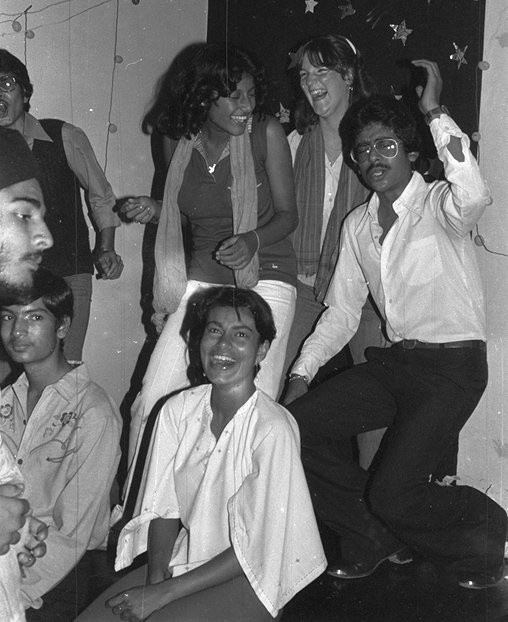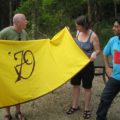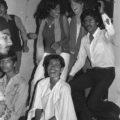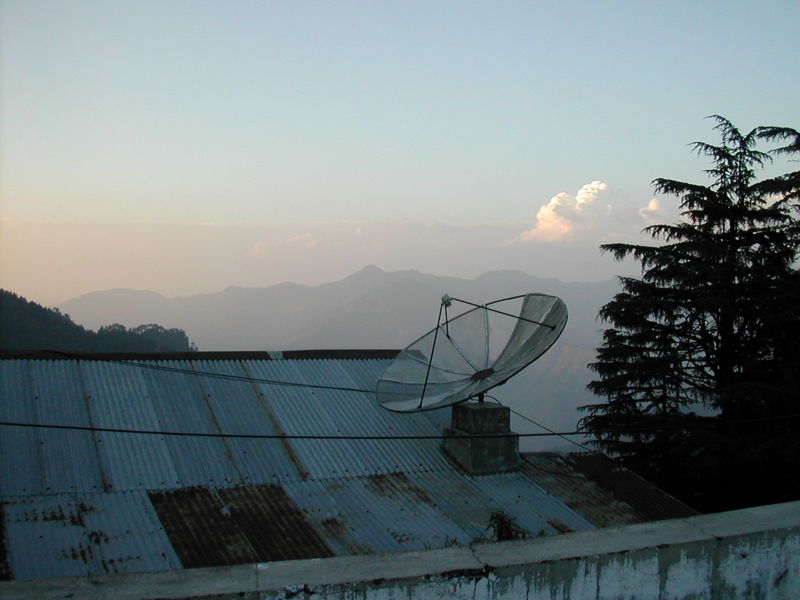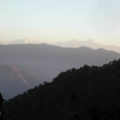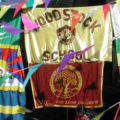dancing to “The Beedi Song” from Omkara
When I attended Woodstock School, I never saw Hindi movies. This was partly a matter of logistics: Mussoorie’s two cinemas were available to us only on Saturdays, and a dark movie hall struck me as good mostly for getting groped by strange men – not something I was anxious to encourage; I got enough of that elsewhere in India. (I did venture once or twice, with a gang of friends, to see a rarely-offered English-language film.)
But Hindi films were such a large part of Indian culture that I couldn’t help being aware of them. We heard, and sometimes even sang, fun-silly songs with refrains like “My name is Anthony Gonzales!” or Chal, chal, chal, meri hathi, o meri sathi… (“Let’s go, my elephant, my companion.”)
During our senior year (1980-81), the original Om Shanti Om, a disco ditty, took India and the school by storm – we played it, to enthusiastic reception, at every school dance (as shown above) …but most of us (even some of the Indian students) still thought Western music and movies were cooler.
Our opportunities to see films of any kind were limited – there were no VCRs or DVD players in those days, and Indian television offered only one state-run black-and-white channel, Doordarshan. The sole television set on campus belonged to Brij Lal, our Hindi teacher, who used it mostly to watch cricket.
These days, Woodstock students have far more choices in entertainment: satellite TV and DVD players in every dorm, and of course you can watch DVDs and Video CDs (widely available in India, and cheaper than DVDs) on your laptop. Mussoorie’s cinemas have both closed down, but are not much missed (though people do happily go to the fancy multiplexes in larger cities).
At the same time, Hindi movies (now bearing the epithet “Bollywood”) have gotten better. The stories can still seem ridiculous to cynical American tastes: full of improbable coincidences, with plot points that often hinge on non-Western cultural norms. Bride & Prejudice worked as an update on Jane Austen’s classic because the “transgressions” of the sisters would seem shocking only in a relatively conservative culture like India’s.
Bollywood eye candy has also improved. Though Indian female stars have always been gorgeous, some of the male stars I observed in the 70s could get away with a bit of a paunch straining their fashionable safari suits. No longer. Nowadays they all work out with professional trainers, with results that speak for themselves.
All this, plus a larger Indian population at the school, has led to burgeoning interest in Bollywood movies among Woodstock students – not least, my daughter, whose current dream is to meet Shahrukh Khan. I was amused to have a houseful of (mostly) American exchange students enthralled by this year’s big hit, Om Shanti Om.
And I could understand why. It’s a great, goofy, fun movie. And, contrary to what some reviewers have said, you don’t have to understand all the Bollywood in-jokes to find it amusing.
So what if everyone bursts into song every ten minutes? That just adds to the fun! (And fans of western musical theater can enjoy themselves picking out the musical and scenographic borrowings from “The Phantom of the Opera” in the climactic scene.) Oh, yes – our old friend Arjun Rampal is in it, too.
If you’re new to Bollywood, I highly recommend Steve Alter‘s new book, “Fantasies of a Bollywood Love Thief” as an introduction.Among many other things, the book is a sort of production diary for Omkara, an Indianized retelling of Othello directed by Vishal Bhardwaj, who also composed the wonderful music.
As soon as I finished the book I rushed out to buy the movie, which is excellent. I can tell good acting when I see it, though I’m having trouble with the dialog: the VCD we bought has Hindi subtitles instead of the promised English, and my Hindi has not yet come back strongly enough for me to follow complex sentences in hifalutin’ semi-Shakespearean language which is at the same time in a western Uttar Pradesh dialect!

